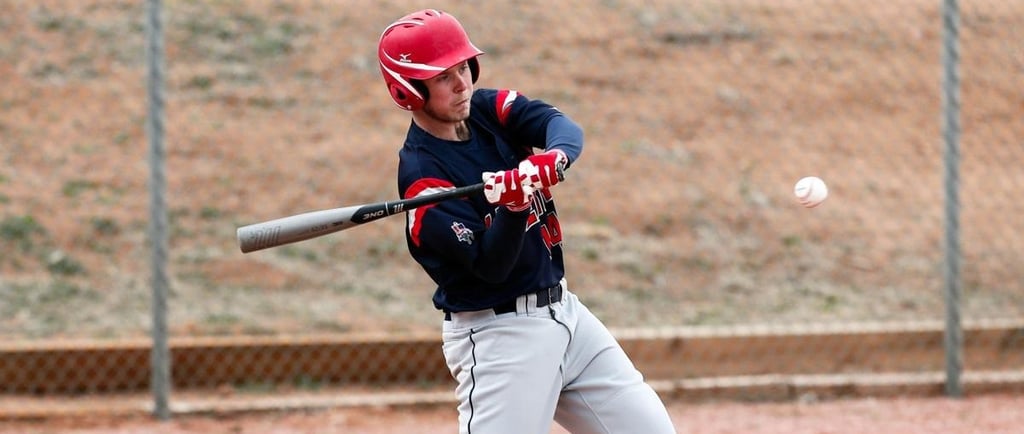The Ultimate Guide to Preparing for Fall Baseball Tryouts
Fall baseball tryouts are around the corner. Learn how to prepare with proven training tips, mental prep, and what coaches are really looking for during tryouts.


Fall baseball tryouts are more than just a formality — they’re an opportunity to set the tone for your development heading into the off-season and beyond. Whether you're trying to make a travel team, move up a level, or simply stand out as a better version of yourself, preparation is everything.
At Swing Lab, we’ve helped hundreds of players get ready for tryouts with a focused approach that builds skill, confidence, and coachability. In this guide, we’ll walk you through how to prepare for fall baseball tryouts — from training schedules to mindset and what coaches are really watching.
Why Fall Tryouts Matter
Many teams, academies, and high schools use fall tryouts to:
Build winter rosters
Identify key development needs
Gauge work ethic and attitude
Set the foundation for spring and summer play
Unlike spring tryouts (which often lead directly into game season), fall is a time to prove you’re serious about improvement and ready to work.
4 Weeks Out: Start Training with Purpose
The earlier you start preparing, the more confident and polished you’ll be when tryouts arrive.
Here’s what to focus on:
1. Swing Mechanics & Consistency
Daily tee work (20–40 swings focusing on contact point and barrel control)
Front toss or machine work (timing and plate coverage)
Video review or HitTrax session to spot swing flaws
2. Defensive Fundamentals
Glove work: soft hands, quick transfers, proper footwork
Infield/outfield drills based on your primary position
3–5 times per week of defensive work, even for 15–20 minutes
3. Throwing Program
Follow an age-appropriate throwing progression
Prioritize accuracy over velocity early in your prep
Include long toss and short-hop throws to sharpen your arm
4. Speed and Agility
Sprint work (10–60 yard bursts)
Lateral movement drills (ladder, cone shuffles)
Reaction training (partner or mirror drills)
2 Weeks Out: Simulate Tryout Scenarios
Now it’s time to sharpen execution and boost confidence.
Simulate the following:
Fielding 10 consecutive ground balls or fly balls under time
Taking 5–10 game-like swings in a row with pressure
Timed 60-yard dash and home-to-first
Mental reps (visualizing success in stressful tryout moments)
Ask a coach or friend to record your swing or fielding and identify minor adjustments. Little improvements can separate you from the pack.
What Coaches Are Really Looking For
Here’s what matters most to coaches at fall tryouts — and it’s not just stats:
What Coaches Are Looking For During Fall Tryouts:
Hitting:
Consistent contact
Clean swing path
Awareness of the strike zone
Defense:
Quick feet and energy
Smooth glove work and transfers
Good positioning and awareness
Arm Strength:
Accurate throws over pure velocity
Proper mechanics
Hustle:
Run hard on every rep
Show effort in warm-ups and drills
Body Language:
Confident, focused, and engaged
Positive energy and eye contact
Coachability:
Listens to feedback
Makes quick adjustments
Asks relevant, respectful questions
The best players don’t always have the best tools — they show up prepared, positive, and focused.
Game Day: Tryout Day Tips
Arrive early and relaxed
Set up your gear, stretch, and visualize. Avoid scrambling or rushing.Be loud and engaged
Encourage others, call out during plays, show leadership.Recover quickly from mistakes
Everyone will miss a throw or mis-hit a ball. Show that you bounce back.Ask smart questions
If something is unclear, politely ask. Coaches remember athletes who care.Control what you can
Effort, attitude, and preparation are 100% in your hands.
After the Tryout: What to Do Next
Reflect: Write down what went well and where you can improve
Follow up: Thank the coaches (especially if trying out for a new team)
Keep training: Tryout is just one step in your journey — not the destination
Book a skills assessment: Use feedback to guide your fall/winter training
How Swing Lab Can Help
We offer personalized pre-tryout prep programs, including:
Swing evaluations with HitTrax data
Fielding and throwing assessments
Tryout-specific training sessions
Mental performance coaching
Let us help you walk into your next tryout with confidence and a plan.
Final Thoughts
Tryouts don’t have to be intimidating — they should be exciting. It’s your chance to show what you’ve worked on, where you’re headed, and who you are as a player.
Remember:
Prepare early and with purpose
Focus on the things you can control
Show coaches that you love the game and want to grow
Need help building your tryout plan? Book a pre-tryout session at Swing Lab, and we’ll help you show up ready — and stand out.
from: Liberty High School
Excuses don't get walk-offs
get in the lab
info@lexasport.com
+1 (972) 638-0872
© 2025. All rights reserved.
NTX Swing Lab is a division of LEXA Sport
